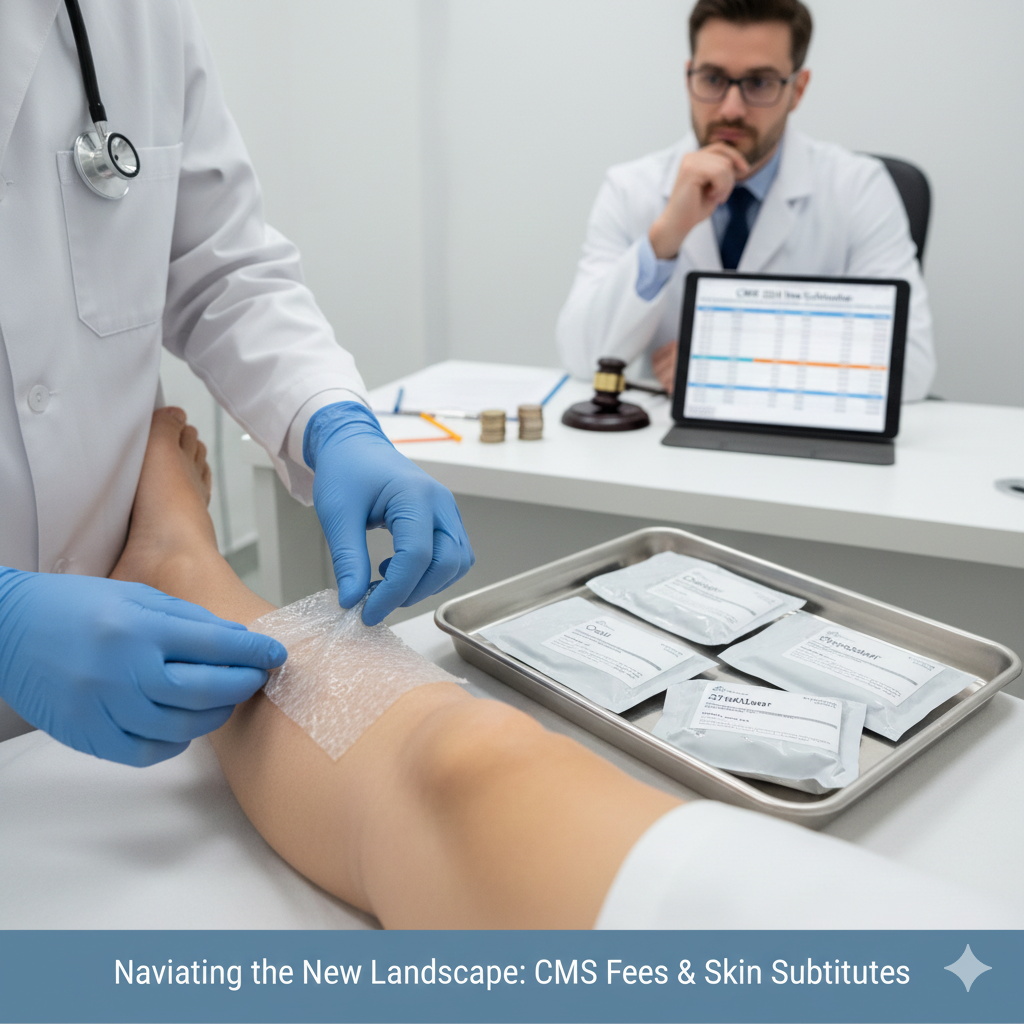The Centers for Medicare & Medicaid Services (CMS) has finalized sweeping changes to the way Medicare pays for skin substitutes, effective January 1, 2026. These reforms, announced in the CY 2026 Medicare Physician Fee Schedule (PFS) Final Rule, replace the Average Sales Price (ASP) + 6% model with a flat, standardized rate of $127.28 per cm² for most skin substitute products. CMS estimates this change will reduce Medicare spending on these products by nearly 90%, saving approximately $19.6 billion in 2026 without compromising patient access or quality of care.
While CMS frames this as a cost-containment measure, it is also a direct strike at the financial incentives that have fueled wound care fraud—a sector that has seen explosive growth and aggressive enforcement actions in recent years.
Why CMS Acted: A Fraud-Driven Spending Surge
Medicare spending on skin substitutes skyrocketed from $250 million in 2019 to over $10 billion in 2024, even though patient volume only doubled. Investigations by the Office of Inspector General (OIG) and the Department of Justice (DOJ) revealed troubling patterns:
- Spread Pricing Abuse: Providers profited from the gap between ASP-based reimbursement and acquisition cost.
- Kickbacks and Bribes: DOJ prosecutions exposed schemes where providers accepted illegal payments for prescribing unnecessary skin substitutes.
- Oversized Grafts: Fraudulent billing often involved ordering excessive graft sizes to maximize reimbursement.
For more on how these schemes violate federal law, see our page on the federal False Claims Act.
The CY 2026 Payment Model: Key Features
- Flat Rate Payment: $127.28 per cm² for most skin substitutes.
- Regulatory Buckets: Products grouped by FDA pathway—HCT/Ps, 510(k) devices, PMA devices.
- Site-Neutral Policy: Aligns payment across physician offices, hospital outpatient departments, and mobile wound care settings.
- Exceptions: Certain biologics under Section 351 of the Public Health Service Act remain ASP-based.
Impact on Wound Care Fraud
Financial Incentives Disappear
The flat-rate model eliminates the lucrative “spread” that drove aggressive marketing and prescribing practices. Providers can no longer profit by selecting higher-priced products or ordering oversized grafts.
Documentation Becomes Critical
CMS emphasized that adequate clinical documentation must support medical necessity and appropriateness. Local Coverage Determinations (LCDs) already require proof of standard-of-care failure and detailed wound assessments. Under the new rule, poor documentation could trigger audits and False Claims Act liability.
Enforcement Will Intensify
Payment reform does not mean enforcement will slow down. DOJ’s 2025 National Health Care Fraud Takedown, which charged seven individuals in connection with $1.1 billion in fraudulent Medicare claims for skin substitutes, shows the government’s commitment. In that vein, the government has created an additional health care fraud strike force in Massachusetts.
While the flat-rate model removes the incentive to choose the most expensive product, it introduces a new fraud risk: overutilization. Because payment is tied to the size of the application, dishonest providers may:
- Apply larger-than-necessary grafts to maximize reimbursement.
- Perform multiple applications when one would suffice.
- Inflate wound measurements to justify oversized grafts.
- Exploit mobile wound care settings, where oversight is weaker.
Additionally:
- Coding Errors: Transitioning to new HCPCS codes and site-neutral payment may create compliance pitfalls.
- Commercial Insurers: Private payers may adopt similar models, expanding fraud risk beyond Medicare.
This shift means fraudsters will adapt—not disappear. Whistleblowers remain essential to uncover these evolving schemes.
What This Means for Whistleblowers
Fraud schemes often persist even after payment reforms. Insiders—billing staff, clinicians, sales reps—are uniquely positioned to expose misconduct. Under the False Claims Act, whistleblowers can receive 15–30% of any recovery for reporting fraud against federal healthcare programs.
If you observe:
- Pressure to order unnecessary skin substitutes
- Kickback arrangements with manufacturers
- Manipulation of wound measurements or graft sizes
- Billing for non-medically necessary applications
…you may have a valid whistleblower claim.
Key Takeaways
- CMS’s flat-rate payment model for skin substitutes begins January 1, 2026.
- Financial incentives driving fraud under ASP-based reimbursement will diminish, but enforcement will intensify.
- Fraudsters may pivot to overutilization—using more product than clinically necessary.
- Whistleblowers remain critical to uncovering fraud schemes that harm patients and taxpayers.
Thinking About Blowing the Whistle?
Whistleblower Law Collaborative LLC is one of the nation’s top whistleblower law firms and devotes its practice entirely to representing clients nationwide in bringing whistleblower actions. Our clients bring actions under the federal and state false claims acts, and other whistleblower programs including those addressing health care fraud. If you have information about fraudulent wound care, you may have a claim under the False Claims Act. If you are considering becoming a health care fraud whistleblower or are aware of other types of fraud, contact us for a free, confidential consultation.

